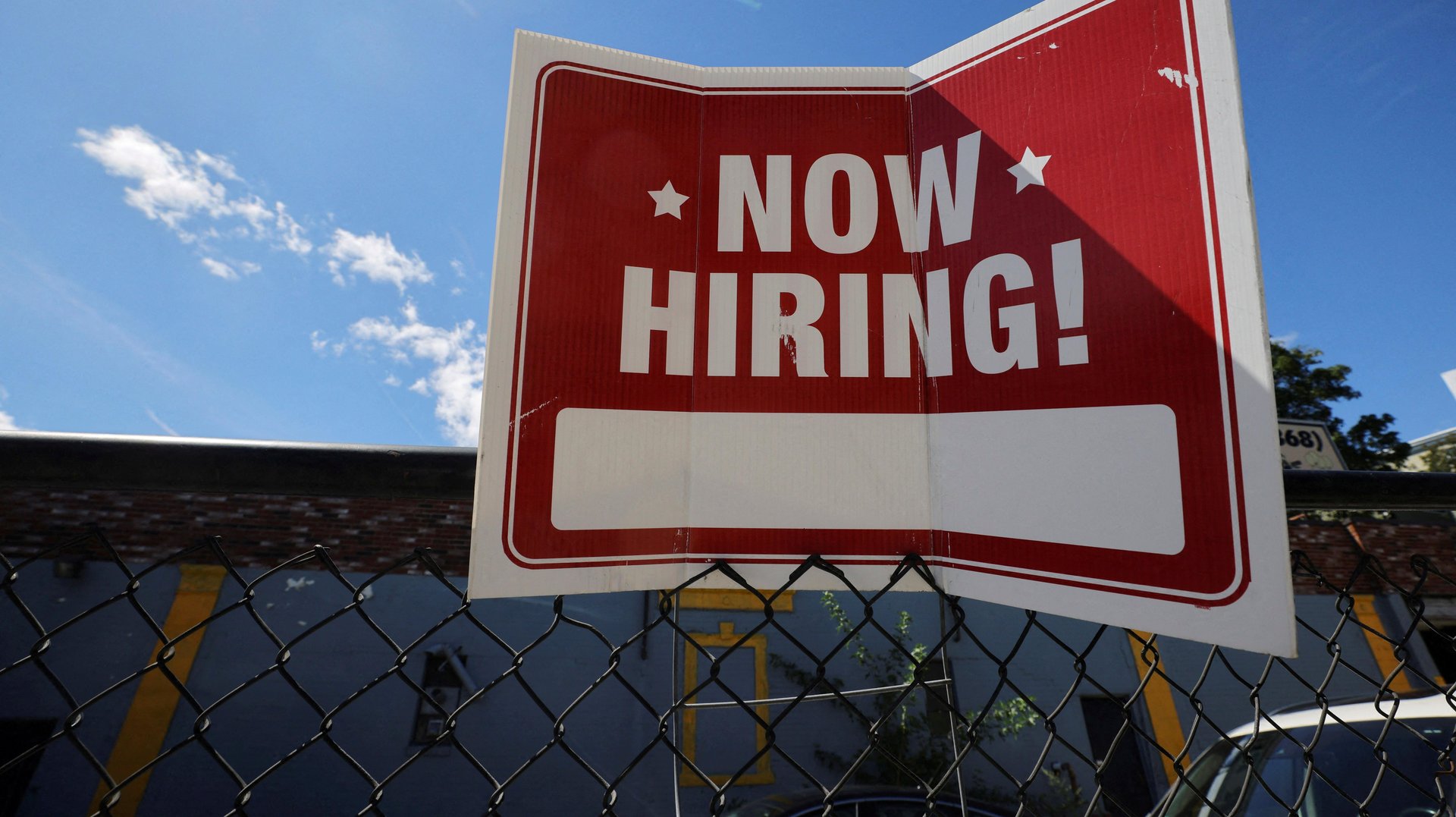There's more softness in the latest US jobs report than most people realize
There are two surveys in the latest jobs report, and they tell two different stories.

At first glance, growth in the US labor market in October looks pretty strong. The US added 261,000 jobs in the month, according to the largest monthly survey in the labor report issued by the Bureau of Labor Statistics (BLS). The survey is answered by all types of businesses and government agencies.
The growth is well above the consensus prediction from a survey of Bloomberg economists that 193,000 jobs would be added last month. While today’s job growth numbers are well below the 315,000 jobs added in September, they remain slightly higher than the pre-pandemic pace of growth.
But the news was weaker on the home front. In the same report, a household survey answered by a cross-section of American workers showed the unemployment rate creeping up from 3.5% in September to 3.7% in October. That translates into 306,000 more Americans who are unemployed and looking for work, according to the BLS (22,000 people dropped out of the labor force altogether).
For some, the worrying news was that a higher share of the most productive workers are falling out of the labor force, according to the household survey. The percentage of Americans who are 25 to 54 and are employed or looking for work fell from 82.8% in August to 82.5% this month. Another troublesome indicator is the sharp decline in the number of unemployed people finding a job in the US. In August, 32.3% of unemployed Americans were finding jobs, according to Indeed labor economist Nick Bunker. In October, that measure had fallen to 26.7%.
A picture of growth and stagnation
“It’s hard not to look at the household survey and wince a bit,” said George Pearkes, an investment analyst at Bespoke Investment Group. “This is some of the softness that we were expecting.”
Although the establishment and household surveys have diverged in the past, this is a particularly sharp divergence at a crucial time for the US labor market. Traditionally, economists trust the establishment survey, which is more accurate, to see what’s happening in the labor market compared to the household survey. The establishment survey covers 131,000 businesses and government agencies which make up 670,000 worksites, while the household survey only reaches 60,000 households.
But the household survey captures parts of the labor market the establishment survey ignores including agricultural workers, the self-employed, workers in private households like nannies, and people on unpaid leave from their jobs.
The household survey’s margin for error is 500,000 (four times larger than the establishment survey), so the BLS doesn’t consider a decline of 328,000 employed people in the household survey to be statistically significant. But even taking this difference into account, the trend line of the household survey is clear: the number of unemployed has plateaued at around 6 million after steadily declining in 2021.
“The establishment survey is larger and has a smaller margin of error,” said Bunker at Indeed. “But I think it is just that there are some times where the household survey can catch things first.”
Too much employment for the Fed
The labor market is back on track after the pandemic, but the pace of growth is faster than the Federal Reserve would prefer. By August, the US economy had fully recovered the jobs lost during the pandemic and had continued to add new ones at a rapid clip. Since the central bank views a tight labor market as major inflationary pressure, Fed officials said on Nov. 2 that they will continue to raise rates as long as the pace of job growth exceeds pre-pandemic levels.
The Fed now hopes to fight inflation while avoiding a recession and rising unemployment. There are already signs that the Fed’s rate hikes are slowing wage growth. Hourly earnings rose by .4% from September to October, which is a much slower pace than the monthly rise in hourly earnings for most of 2021.
At the Nov. 2 press conference, Fed chair Jerome Powell said he hopes the central bank can reduce the number of job openings and new jobs without raising unemployment, conceding that the metrics tend to be in opposition. “This labor market can soften without having to soften as much as history would indicate through the unemployment channel,” Powell said. “It can soften through job openings declining. But we won’t know that [for sure]. It will be discovered empirically.”